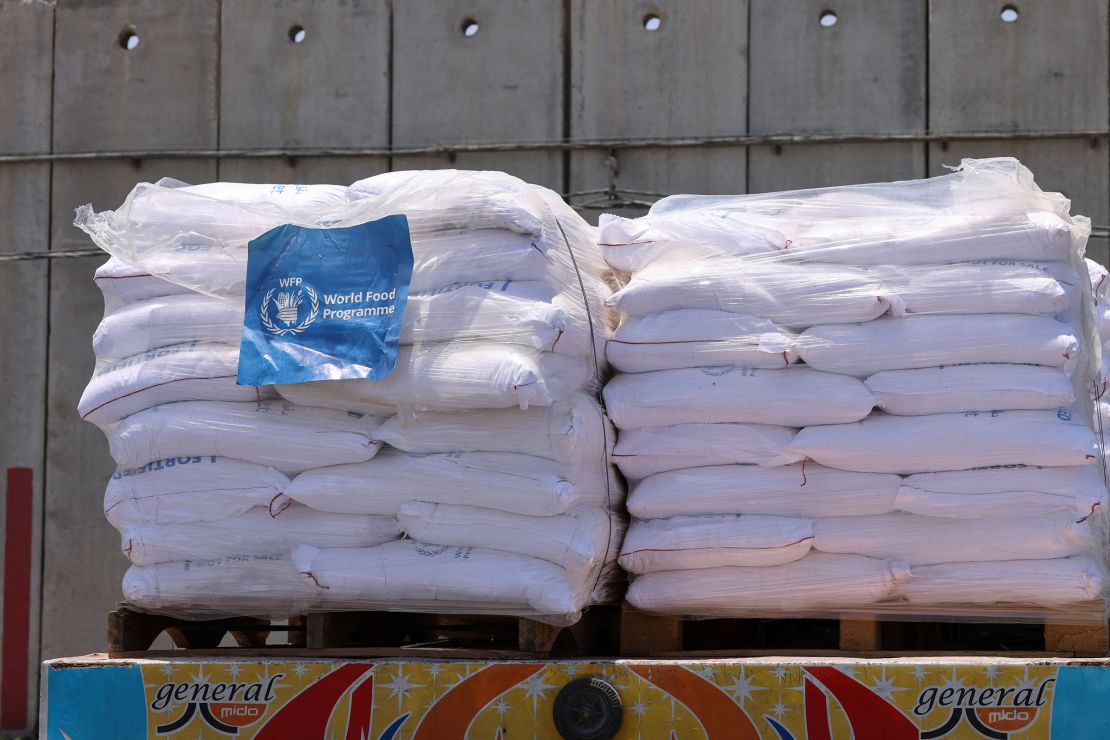The United Nations food agency is unable to feed most civilians in Rafah, its local director warned Friday, with most border crossings closed amid what he described as “apocalyptic conditions” and the Israeli military pushing further into Gaza’s southernmost city.
The World Food Programme (WFP) is currently serving only 27,000 people in Rafah, according to Matthew Hollingworth, the organization’s country director in Gaza. That’s a tiny fraction of the roughly one million Gazans who have been displaced from the area.
“The sounds, the smells, the everyday life are horrific and apocalyptic,” Hollingworth told journalists Friday after returning from a trip to Gaza.
“People sleep to the sounds of bombing, they sleep to the sounds of drones, they sleep to the sounds of war, as now tanks roll into parts of central Rafah, which is only kilometers away. And they wake to the same sounds,” said Hollingsworth.

“From the seventh of May to the 20th, not a single WFP truck crossed from the southern corridors of Egypt into Rafah,” he said.
Rafah had previously been the central artery for aid to flow into Gaza, as the only border crossing not controlled by Israel. But since Israel seized control of the Gazan side of the Rafah crossing on May 7, aid has been blocked, with supplies piling up in Egypt and the enclave teetering close to famine.
Israel’s military has continued to push further into Rafah, defying international concern and anger over its operations in the city. The Israel Defense Forces (IDF) said on Friday that its troops were in central Rafah – confirming what eyewitnesses told CNN earlier this week, when tanks were spotted there for the first time since it entered the city in May.
“IDF troops in central Rafah located Hamas rocket launchers, terror tunnel shafts, and weapons. The troops also dismantled a Hamas weapons storage facility in the area,” the IDF said in the statement.
On Wednesday, the Israeli military said it had established “operational control” over the Philadelphi Corridor, a 14-kilometer (8.7-mile) buffer zone on the Palestinian side of the Egypt-Gaza border.
The IDF’s operations in Rafah have prompted a 67% drop in the amount of humanitarian aid getting through, according to the UN.
Gaza is now receiving a daily average of 58 aid trucks – down from the daily average of 176 trucks between April and May, which itself is far from the 500 trucks that used to enter Gaza each day before the war broke out in October.
With Rafah now the epicenter of hostilities, aid has continued to trickle in from two other crossings: Kerem Shalom in the south and Erez in the north.
CNN has contacted WFP to clarify whether it managed to send trucks via alternative land crossings.
The IDF said 36 trucks were transferred on Thursday through Kerem Shalom and Erez West on behalf of the WFP.
Hollingworth added that the WFP’s warehouse in Rafah, which was once capable of storing 2,700 tons of food, is no longer operational.
“We do not have the supplies available to provide significant numbers of ready-to-eat ration boxes. We don’t have significant supplies of wheat flour to hand out to those families that have a stove to cook on,” Hollingworth said – but added they are providing around 400,000 hot meals to families in central Rafah.





